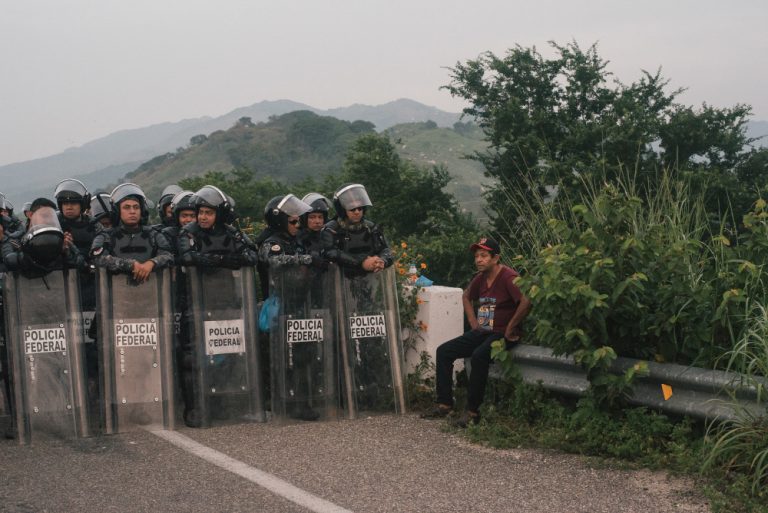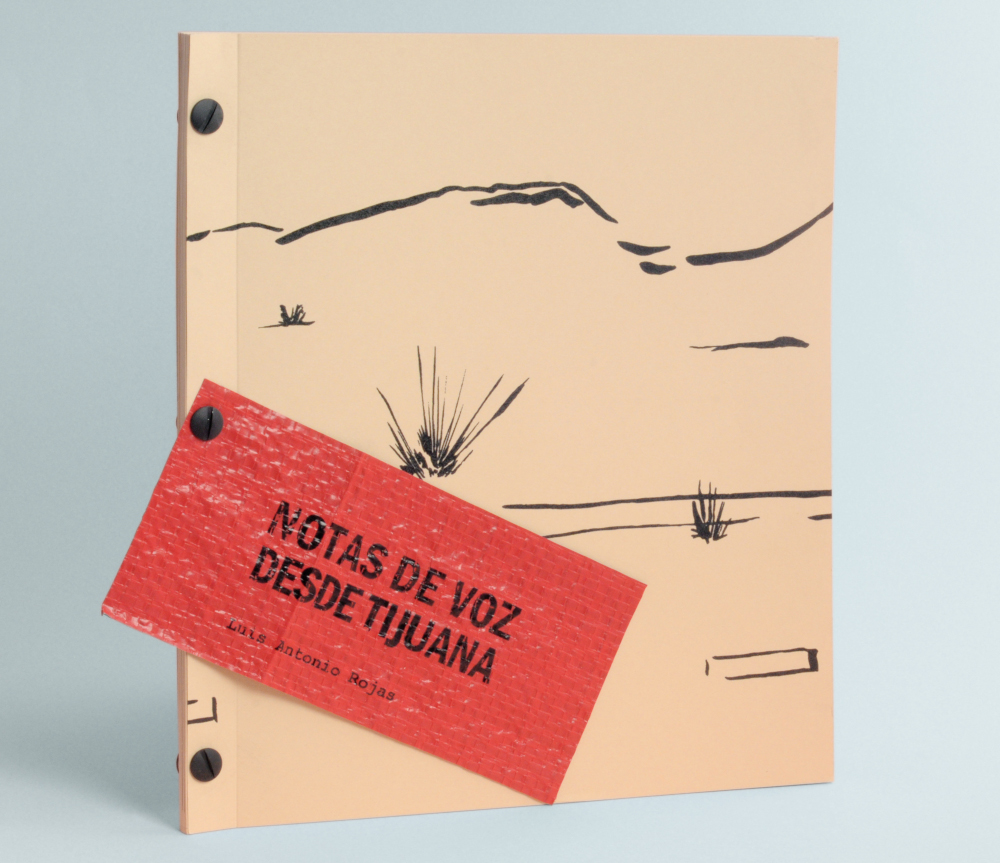
The degree of involvement of documentarians have with the people they photograph is a contentious issue. Sometimes, they feel the need to engage more actively and burst the sacred bubbles of objectivity and neutrality. Notas de Voz Desde Tijuana (Voice Notes from Tijuana) is a slim photobook by Luis Antonio Rojas that combines portraits of Central American migrants waiting to cross into the USA with messages they send back home using Rojas’ phone. They may not look like it, but these migrants are the lucky few who can see the American side of the border even if they can’t yet step on it.
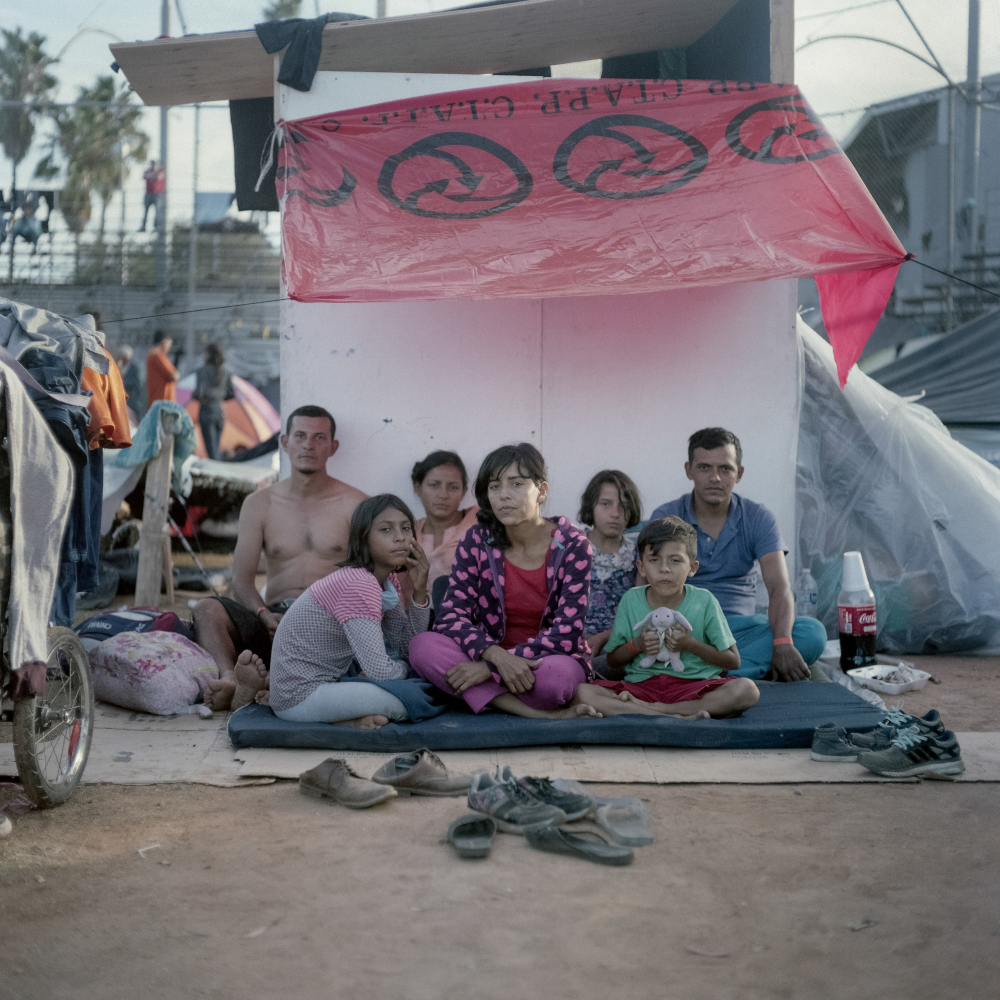
Facebook voice note to her sister in Honduras.
November 21, 2018. “Hi, Juli. I’m Jane, your sister. I send you my regards from . . . (laughs) . . . from Tijuana. And we want to tell you that we love you so much, all of us, your family. Thank God we met a friend, and he offered us to message you. Send my regards to all the family and friends. Tell everyone who asks for us that we love them so much, and if God allows it we will achieve our goal, and well . . . We will keep in touch further along because we don’t have a way to communicate. Take care of yourself, and God bless you forever, today, tomorrow and always. Do not forget that we love you.”
The opening image shows a family sitting on a thin blue mattress like the survivors of a shipwreck, except that they’re stranded in an improvised camp rather than at sea. While the picture is posed, the anguish captured by the camera feels genuine since the place they’re taking refuge, set up by an unsympathetic local government, is not equipped to cover their basic needs.
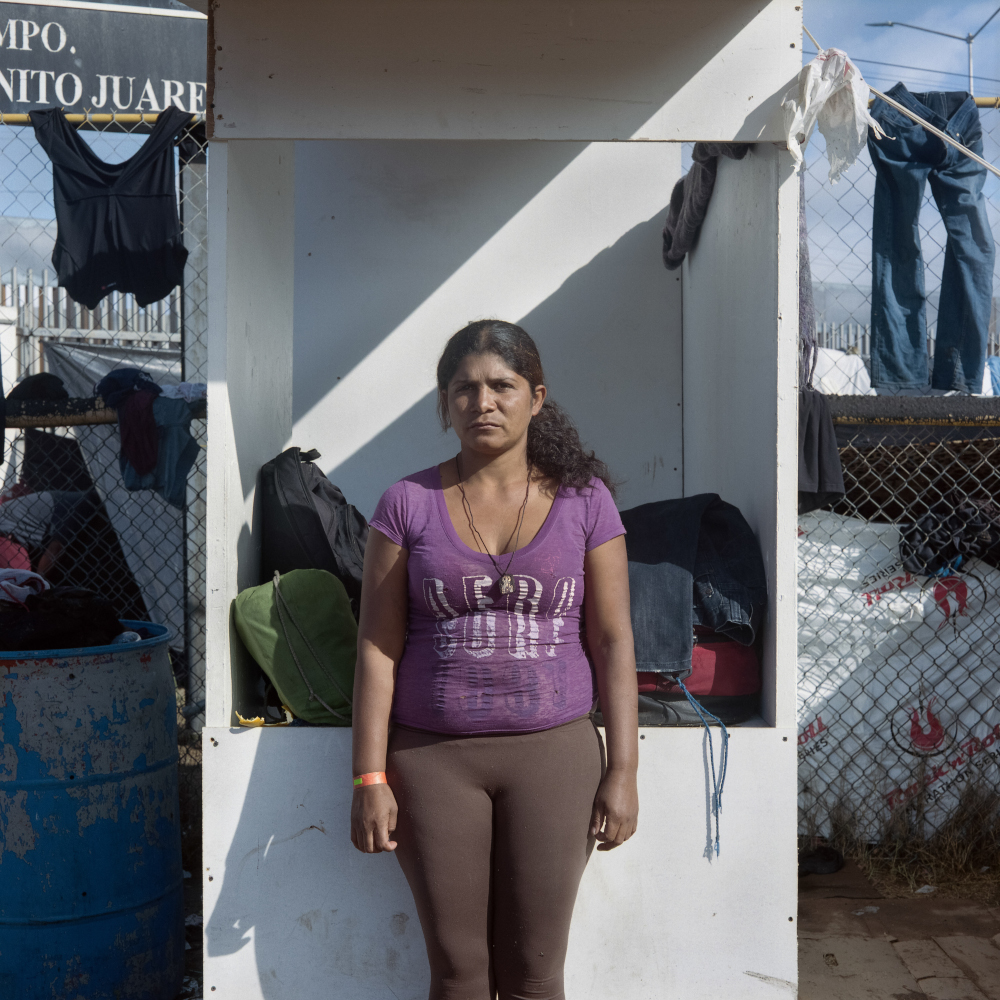
WhatsApp voice note to her sister in the U.S.
November 22, 2018. “Hi Carla, it’s me, Cintia. I’m here in Tijuana, at the border of . . . I’m at the wall already. How’s it called? What I wanted to say to is . . . can you send me at least 20 dollars? If you could see . . . we are stuck here. We have nothing to eat. Damn, I’m suffering. Someone send money to Rudis, I don’t know who. You haven’t sent me anything, right? Send me at least 20 dollars, Carla. I’ll appreciate it so much. Don’t worry, if I cross to the other side, I’ll help you too.”
The portraits, shot in a square format, capture the vulnerability of people who have gambled everything on a nearly impossible dream. In contrast, a few rectangular pictures – laid out as double spreads – show fleeting moments of the caravan’s progress: people crammed on a truck, the federal police blocking a highway, a mother and her children resting on the bare ground, etc.
The book, bound with screw posts and printed on thick brown paper, makes the photographs look bureaucratic. The effective inclusion of text provides essential information that we couldn’t access through visual means, expanding the emotional reach of the work (which was awarded an Honorable Mention at the XIX Photography Biennial at the Centro de la Imagen, Mexico’s premier institution for photography).
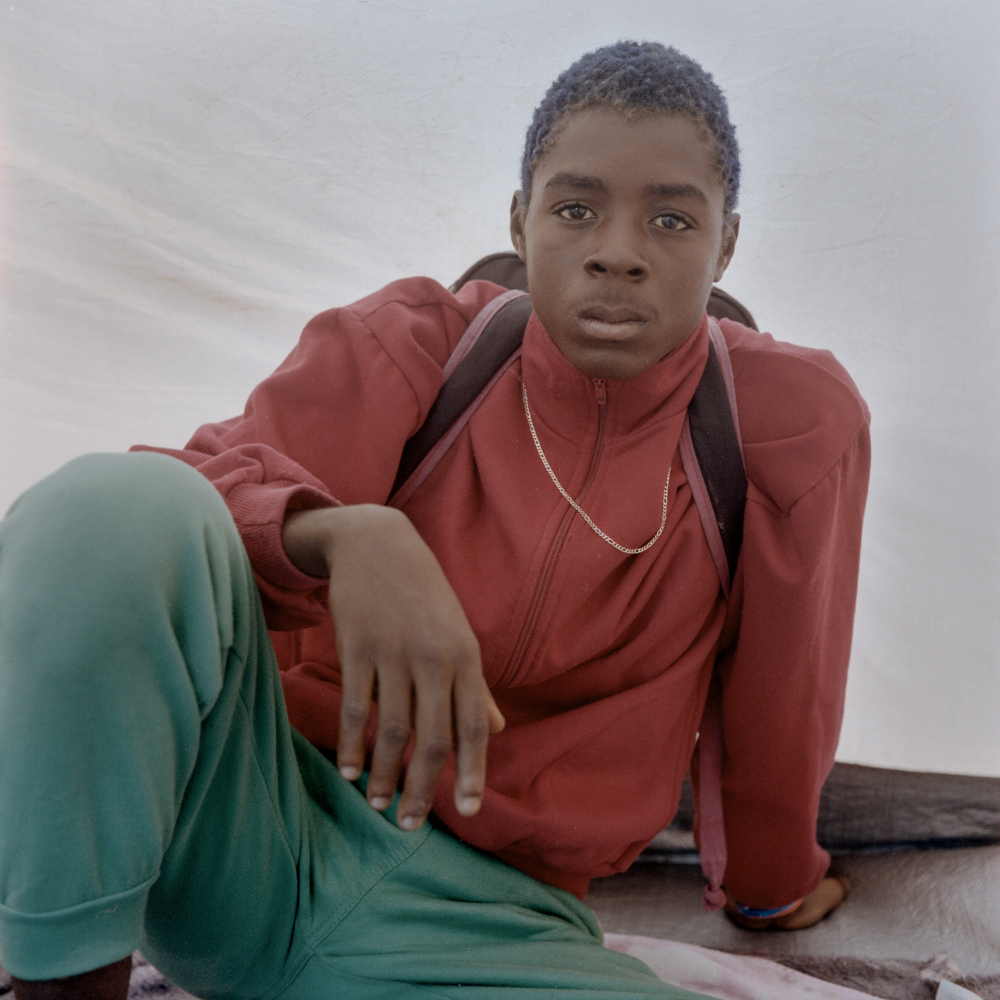
The phone calls and voice messages were delivered via social networks, which brings attention to their role in illegal migration, where they often serve as the migrants’ only connection to their homes. Platforms like Facebook and WhatsApp are their only resort when nobody can assist them, like when a woman requests money from a relative claiming she has nothing to eat.
The book’s concept came to Rojas after a Honduran man asked to borrow his phone to apologize for not saying goodbye to his father. After that, Rojas decided to go around the camp, asking people if they needed to communicate back home. Only one person refused to be photographed after taking his offer.
Many haven’t been absent for long, yet their messages are remorseful and tend to be delivered in a farewell tone as if anticipating an unfortunate turn of events. For instance, sixteen-year-old Maynor Melendez struggles to describe his situation to his mother, or perhaps he just omits details to spare her from suffering, even if his desperation is laid bare by his iterative speech:
“Hi, mommy. How are you, mom? I’m fine in here. And how are you? I don’t know how my Facebook was blocked. I don’t know my password. I’m calling from the cellphone of a friend who is a journalist. And how are you mom? What good news can you tell me, mom? What are you doing mom? I’m sorry that I haven’t been able to send you messages mom. I’m in Tijuana mom. I’m sorry that I haven’t been able to send you messages mom. I know that you have been thinking about me, mom. I’m fine. I’m with friends mom. I love you so much, you know it, mom. I love you so much, so much mom. And how are my brothers?”
These sentences may be simple, but they are tough to forget, just like his portrait. His starry eyes have a way of staying with you. Maynor is neither a man nor a child, but his gaze reflects how he’s had to make tough decisions so early in his life.
It’s common knowledge that religiosity is on the wane, seemingly incompatible with our modern lifestyle, but God is invoked constantly in these messages. People want his protection and define their future in relation to his divine will, a Christian worldview that’s hard to dismiss as simply a manner of speech. The migrants need to anchor their efforts onto something, and faith proves vital for their mental well-being. Rojas implies the importance of their faith in an image of a shirtless man resting on the floor with his body hair trimmed in the shape of a cross.
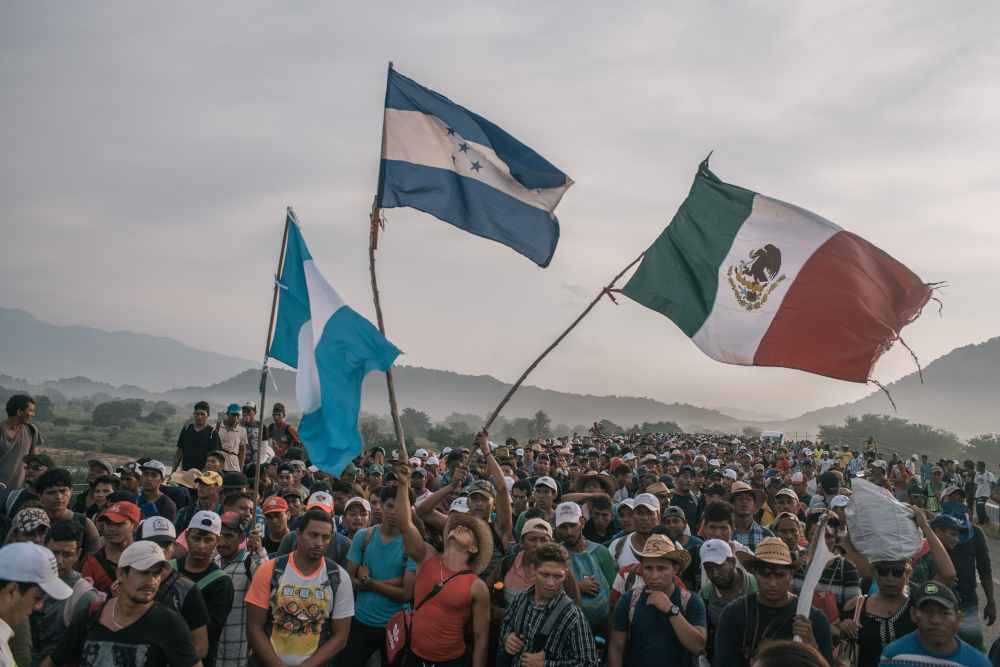
The book closes with a picture of a caravan that extends into the horizon, advancing on foot through a countryside that offers no visual cues as to whether they are nearing their destination. In the foreground, three men fly the Guatemalan, Honduran, and Mexican flags. The physical proximity of these symbols suggests the deep bonds between Latin American countries, such as a common language, customs, and an intertwined history, but also how they suffer from similar precarious social and economic conditions that result in frail democracies. Upon closer inspection, however, one can notice the men are not interacting with each other, which is equally representative of the distance between these states in the realm of international relations.
No publication can contain the myriad complexities of illegal migration, but Rojas’ work certainly gets us closer to apprehending the personal dimension of the problem, which has only been possible by eschewing the expected barriers between subject and documentarian. Usually, photojournalists refrain from helping the people they photograph to avoid pressuring them, which theoretically ensures the gathering of reliable information or testimony. Still, Rojas believes this ethical convention has become a comfortable way for foreign photojournalists to perpetuate ‘extractivist’ practices or is simply used as armor to avoid getting emotionally involved and be able to move on quickly to the next assignment. Even if some outlets disagree with his approach, Rojas is convinced he would lend anyone his phone if the situation demanded it.
This is part of a series of reviews on Latin American photographers by Arturo Soto. Check out his other articles on Dispatches: The VII Insider Blog:
The Persuasions of Disobedience: Ana María Lagos
Feeling Out the Past: Graciela Iturbide’s “Heliotropo 37”
Pablo Hare: Sites of Exploitation in Peru
The Possibilities of the Actual: Adriana Lestido’s “Metropolis”
